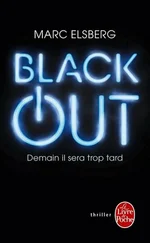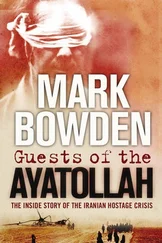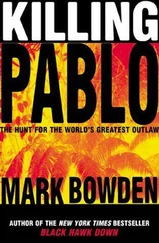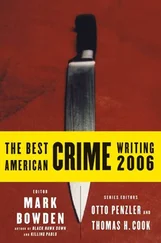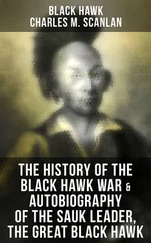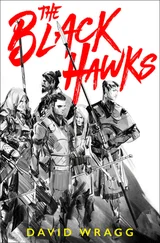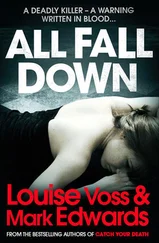Mark Bowden - Black Hawk Down
Здесь есть возможность читать онлайн «Mark Bowden - Black Hawk Down» весь текст электронной книги совершенно бесплатно (целиком полную версию без сокращений). В некоторых случаях можно слушать аудио, скачать через торрент в формате fb2 и присутствует краткое содержание. Город: New York, Год выпуска: 1999, ISBN: 1999, Издательство: Atlantic Monthly Press, Жанр: nonf_military, на английском языке. Описание произведения, (предисловие) а так же отзывы посетителей доступны на портале библиотеки ЛибКат.
- Название:Black Hawk Down
- Автор:
- Издательство:Atlantic Monthly Press
- Жанр:
- Год:1999
- Город:New York
- ISBN:978-0871137388
- Рейтинг книги:3 / 5. Голосов: 1
-
Избранное:Добавить в избранное
- Отзывы:
-
Ваша оценка:
- 60
- 1
- 2
- 3
- 4
- 5
Black Hawk Down: краткое содержание, описание и аннотация
Предлагаем к чтению аннотацию, описание, краткое содержание или предисловие (зависит от того, что написал сам автор книги «Black Hawk Down»). Если вы не нашли необходимую информацию о книге — напишите в комментариях, мы постараемся отыскать её.
Black Hawk Down — читать онлайн бесплатно полную книгу (весь текст) целиком
Ниже представлен текст книги, разбитый по страницам. Система сохранения места последней прочитанной страницы, позволяет с удобством читать онлайн бесплатно книгу «Black Hawk Down», без необходимости каждый раз заново искать на чём Вы остановились. Поставьте закладку, и сможете в любой момент перейти на страницу, на которой закончили чтение.
Интервал:
Закладка:
Lying helplessly on his back, Staff Sgt. Matt Eversmann felt his vehicle steer left when he knew the crash site was back to his right. There was another turn. Then another. It was easy to get lost in Mogadishu. Roads you thought were taking you one place would suddenly slant off in a different direction.
At the rear of the convoy, SEAL John Gay, his right hip still aching and bloody from where an AK-47 round had been stopped by his knife, was also getting frustrated. There were about seven wounded Rangers in his humvee who seemed to be in varying degrees of paralysis. As far as Gay could see, none had life-threatening or immobilizing injuries. All were capable of fighting, but few of them were. They seemed to believe that their mission had ended with the capture of the Somalis back at the target house. It was already evident to Gay that they were not on their way home but were fighting for their lives.
Sgt. First Class Matt Rierson, leader of the Commando team that had taken the Somalis, did not know where the convoy was going. He was riding blind. Standard procedure on a convoy was to tell each driver where he was headed. That way, if the lead vehicle got hit, the convoy could continue.
But convoy commander Danny McKnight, a lieutenant colonel more accustomed to commanding a battalion than a line of vehicles, hadn’t told anyone. McKnight was in his lead vehicle with a radio plugged in his ear, relying on his eyes in the sky to direct him. The inexperienced Ranger drivers kept stopping at intersections, or stopping just beyond them, leaving the vehicle immediately behind exposed to a wicked crossfire.
The convoy took several doglegs onto side streets and got no closer to Wolcott’s crash site. Every time they stopped, the able-bodied would jump out to pull security, or guard the column, and then more people would get shot. Those who were not wounded were smeared with the blood of those they had helped carry back to vehicles.
It was a nightmare. The sun was low now, so turning west meant a blinding stab of dusk. At one point, after driving through a hail of gunfire, the column stopped, then made a U-turn and drove straight back through the same maelstrom.
Every time the ungainly five-tons turned around, they would have to pull clumsily up and back, up and back, to negotiate the narrow streets. The whole exercise seemed maddeningly foolhardy. Veterans such as Gay and Rierson wondered, Who’s calling the shots here?
The driver of Gay’s humvee, Howard Wasdin, who had been shot in the left leg back by the target house, was hit in the right leg. Pfc. Clay Othic’s shattered right arm ached but wasn’t bleeding. He was shooting through his second magazine of M-16 ammo when Sgt. Lorenzo Ruiz, a tough little ex-boxer from El Paso, Texas, who had taken over the .50-cal, suddenly slumped down.
“He got shot! He got shot!” shouted the driver, who raced the humvee frantically up the column with the .50-cal just spinning around in the empty turret.
“Get the .50-cal up!” screamed Sgt. First Class Bob Gallagher. “Get the .50 cal up ASAP!”
Packed in the way they were, with Ruiz now slumped on top of them, no one could climb into the turret from inside the humvee. Spec. Dave Ritchie got out and jumped up to the turret from the street. He couldn’t climb inside because Ruiz’s limp form was in the way, so he hung on from the outside as they began moving again. Ritchie swiveled and shot the big gun.
Inside, the men pulled Ruiz out of the turret. They tore off his flak vest and shirt, and found a hole in his lower right chest and a bigger exit wound in his back. He was bleeding heavily and seemed to be in shock. Ruiz, like many of the men in the vehicles, had taken the armored plates out of his flak vest to reduce the weight he had to carry in the African heat.
They made another stop. Rangers piled out to provide cover.
At opposite sides of one alley stood Spec. Aaron Hand and Sgt. Casey Joyce, the Ranger who had earlier run alone through gunfire to get help for Pvt. First Class Todd Blackburn, the Ranger who had fallen 70 feet off the fast rope at the start of the mission. That seemed like hours ago.
Joyce and Hand were in a furious firefight. Spec. Eric Spalding, who had just leaped from his truck to provide cover, watched rounds shatter the wall just over Hand’s head. They had to get out of there.
“We’re going to move!” he screamed to Hand.
Hand didn’t hear him. From where Spalding stood, it looked as if Hand was going to be shot for sure. He was doing everything wrong. He had not sought cover; he was changing magazines with his back exposed. Spalding knew that he should go help cover his friend and pull him back, but that meant crossing the alley where bullets were flying. He hesitated. Hell no, I’m not going to cross that alley.
As Spalding debated with himself, Gay ran out to help. The SEAL fired several rounds up the alley and herded Hand back to the vehicles.
Across the alley, Joyce was on one knee, doing things right. He’d found cover and was returning disciplined fire, just the way he’d been trained. Then a gun barrel poked out a window above Joyce and let off a quick burst. There wasn’t even time for Spalding to shout a warning, even if Joyce had been able to hear him. There was just a blaaaap! and a spurt of fire from the barrel, and the sergeant went straight down in the dirt on his face.
Immediately, a .50-cal on one of the humvees blasted gaping holes in the wall around the window where the gun had appeared. Sgt. Jim Telscher, weaving through the heavy fire, sprinted out to Joyce, grabbed him by the shirt and vest, and dragged him back to the vehicles.
Joyce’s skin was white. His eyes were open wide but empty. He looked dead. He had been hit through the vest in the upper back where the Rangers’ new flak vests had no protective plate. The round had passed through his torso and had come out his abdomen. It lodged in the front of the vest, which did have an armored plate. They loaded Joyce in back with the mounting number of wounded.
CHAPTER 13
No Cover from the Flying Grenades
November 28, 1997
FED UP, MATT RIERSON left his humvee back in the column and sprinted up to the lead vehicle. As he saw it, Danny McKnight was overwhelmed. The colonel leading the convoy appeared completely lost. And now McKnight, too, was wounded. He was bleeding from the arm and the neck.
Sgt. Rierson finally learned from McKnight where they were trying to go. Then, on his way back down the column, the commando stopped at every vehicle and spread the word. He screamed at each driver to stay out of the intersections, where they were exposed to concentrated fire.
Some of the men in the column had caught glimpses of Cliff Wolcott’s helicopter crash site in their meandering, but had no idea that was where they were supposed to go. Rierson tried to impose some order on the column. He began trying to call in helicopter gunships, while other members of his Delta team organized men to collect the wounded every time the column stopped.
Over the radio came a hopeful inquiry from Command, which clearly misunderstood their situation.
“Uniform 64, you got everybody out of the crash site? Over.”
Uniform 64 was the column’s code name. McKnight answered:
“We have no positive contact with them yet. We took a lot of rounds as we were clearing out of the area. Quite a few wounded, including me. Over.”
Command replied:
“Roger. Want you to try to go to the first crash site and consolidate on that. Once we get everybody out of there we’ll go to the second crash site and try to do an exfill [move out].”
“This was, of course, out of the question, but McKnight wasn’t giving up.”
“Roger. Understand. Can you give me some… we just need a direction and distance from where I’m at.”
Читать дальшеИнтервал:
Закладка:
Похожие книги на «Black Hawk Down»
Представляем Вашему вниманию похожие книги на «Black Hawk Down» списком для выбора. Мы отобрали схожую по названию и смыслу литературу в надежде предоставить читателям больше вариантов отыскать новые, интересные, ещё непрочитанные произведения.
Обсуждение, отзывы о книге «Black Hawk Down» и просто собственные мнения читателей. Оставьте ваши комментарии, напишите, что Вы думаете о произведении, его смысле или главных героях. Укажите что конкретно понравилось, а что нет, и почему Вы так считаете.


